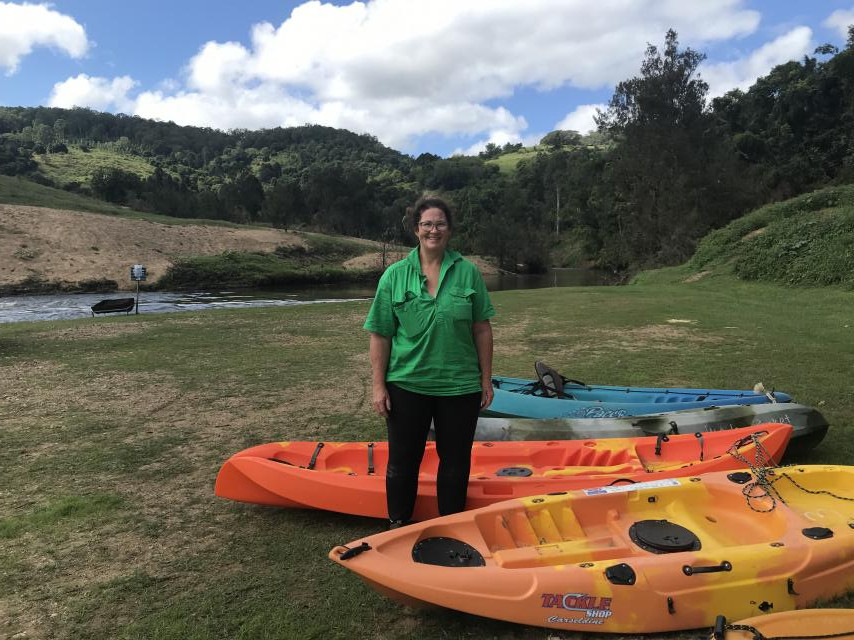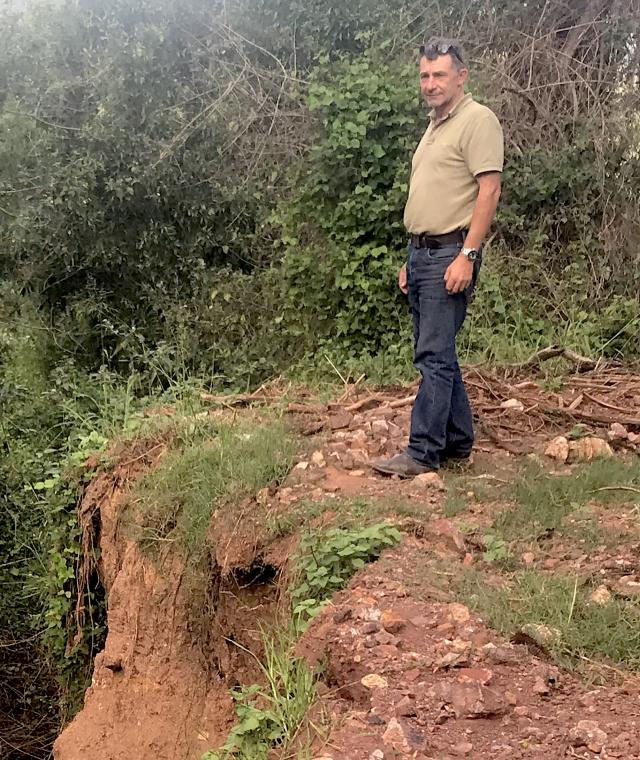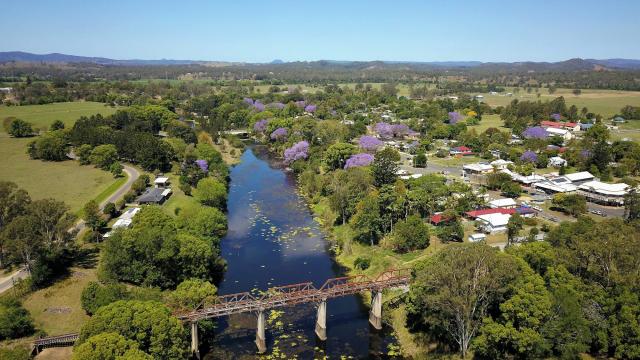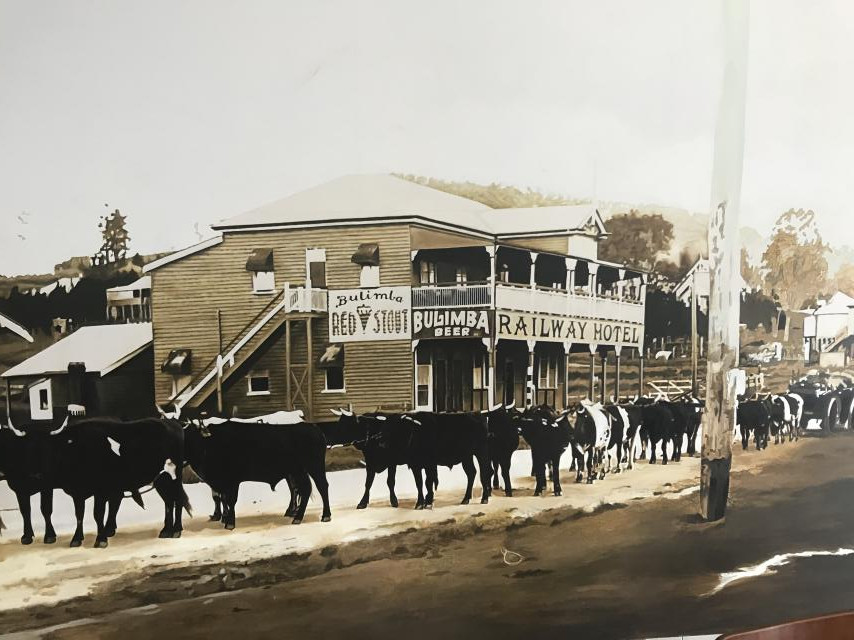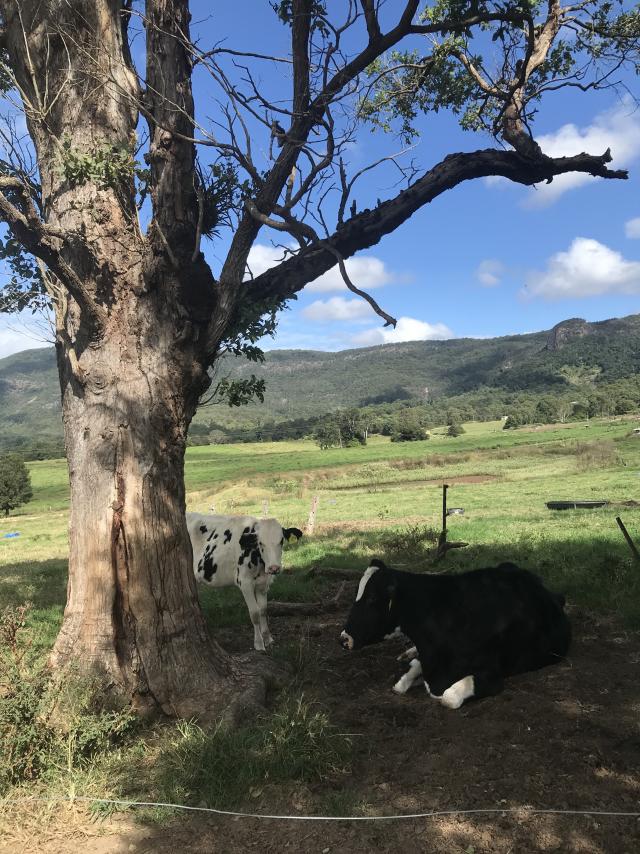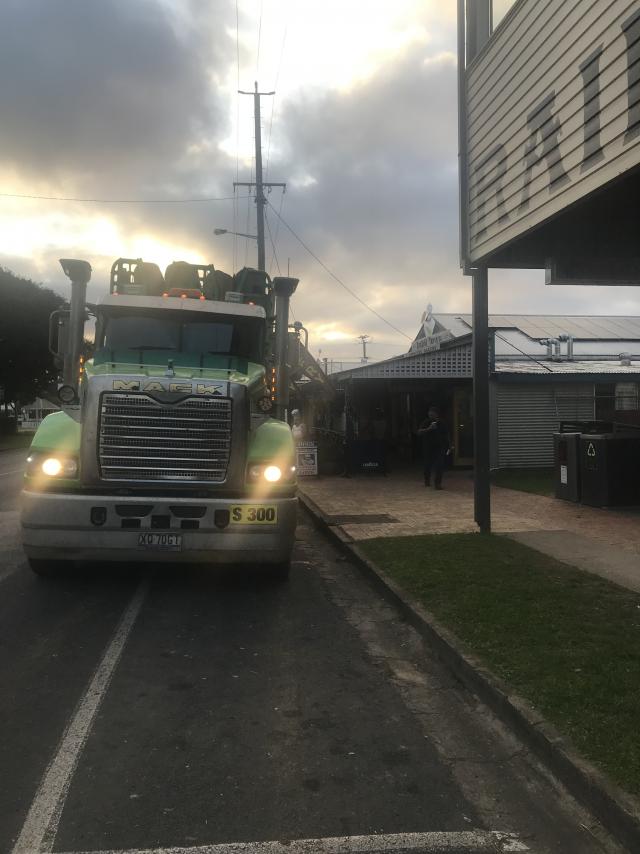I woke before dawn in my little room above Imbil’s Railway Hotel and wandered downstairs, somewhat optimistically hoping for a cup of coffee.
Nothing doing in the pub itself but out on Yabba Creek Road I was surprised to see a lineup of timber trucks and a queue of men in high vis waiting for their coffees and breakfast pies at the Town and Country Bakery. I lined up in the dark and waited and a timber man turned around to greet me.
“Busier than the Queen Street Mall here most mornings,” he said.
“Best pies in the Valley.”
The first selector at what we now know as Imbil might have been its most controversial residents but over time became one of its most esteemed civic fathers.
William Tatlock Chippendall had been the gun-toting teenaged manager of Yandina Station in the early 1860s and is believed to have been one of the ring-leaders of the Aboriginal massacre at Murdering Creek, but by the 1870s he had matured into a family man who brought his wife and baby son by bullock wagon and Cobb & Co to the Mary Valley to start a new life.
An old regional history puts this transition in an interesting light.
“He had been managing Yandina Station but… there were problems with the Aborigines there as the land was swampy and they would drive the cows … into the swamp and spear them…”
Over time Chippendall (known to all as WT) seems to have modified his opinion of First Nations peoples, offering work to several mobs encamped on his property, while his son Frank grew up playing with Aboriginal kids and learning their dialects. We can’t call it redemption because Chippendall’s part in Murdering Creek – indeed the massacre itself – has never been proven, but WT went on to serve nine terms as chairman of the Widgee Division.
Imbil township was slow to grow but by the 1930s there was enough there to supply services to the surrounding farms and the growing timber industry.
After World War II, Australia accepted 182,000 displaced people from a range of countries, mostly parts of Eastern Europe. Many of these, known generically as “the Balts” (and to some, “the bloody Balts”), came to work in the Queensland forestry operations.
At Sterling’s Crossing near Imbil, 150 people lived in tent camps while tending plantations.
According to historian Judith Powell, “The camp had no electricity, no running water and few conveniences. Only a few of the people spoke English. The camp built its own hall for fancy-dress balls and other festivities and on Saturday many went to the movies in Imbil.”
As a then child of the camp told Powell: “It was the best time of my life! We kids were allowed to run riot through the bush and do almost anything that we wanted to.”
I could go on forever about the rich history of this little town, but the road beckons, places to see, people to meet.
I finish my coffee and croissant outside the bakery, bid farewell to the timber truckies and strike out for Moy Pocket on the e-bike as the early sun glistens over Yabba Creek.
My first port of call this glorious late autumn morning is with Libby Rough at her Hidden Pocket HipCamp. I want to talk about how camper revenue has saved the family dairy farm she runs with husband Peter, but first Libby has something to get off her chest.
“Since the floods we’ve had free campers coming in because the fences are down and you can’t be had for trespassing if you don’t open a gate or cut a fence.
“It’s outrageous. I chased one bloke on the quad and he was doing 100 kilometres across our paddocks to get away.
“When I caught him, he told me to calm down. Me!
“When we went down to our private site to inspect the damage, we found the little bastards had used two of our new fence posts for firewood and left their beer cans and bottles everywhere. So we’re going to put a boom gate in and lock it.”
Libby, a former Brisbane cop, doesn’t mince words but she has a self-deprecating wit and is impossible not to like.
Born on the land in NSW, she met Pete on a working holiday overseas. After they married, they picked up a good deal on 36.5 hectares (90 acres) as part of the buy-back for the failed Traveston Dam project adjoining Pete’s family’s dairy farm at Moy Pocket. Most of that stretch of riverbank is now a commercial campsite.
In 2013 Peter and Libby took over the management of the dairy farm, Burnleigh Holsteins, but in a few short years they were sending off prized milkers to the slaughter yards as the worst drought in living memory hit the Mary Valley hard.
“For two years it was really bad here,” Libby said.
“In the first three months of 2020 we didn’t receive a milk cheque. We had no feed and no water to irrigate, so we had to sell 40 milkers for slaughter.
“Pete lost some really good cow families that day, but he had to make a decision and no one had the money to buy them as milkers, so they went to the meatworks.
“It was heartbreaking.”
Although the elbow of the Mary that runs through their property was pretty much dry, Libby decided to bring in some much-needed revenue by turning the grassy slope running down to the riverbank flats – frequently used by family and friends for camping – into a commercial campsite.
“We listed Hidden Pocket on the U-Camp platform in December 19 and our first campers stayed over Christmas and then extended.
“I was thrilled so I asked them for advice about what they liked and what could be improved. Since then we’ve been booked out every weekend.
“We now offer a one-group booking for the whole site. Our limit is 48 people, so we get a lot of people coming for important birthdays and other celebrations.
“The rule is they have to bring Portaloos. We don’t provide bins so they have to take their rubbish with them.”
Libby says that while most people abide by the rules, she sometimes finds holes dug in the forest where they have deposited their rubbish and toilet waste.
And then, of course, there are the P-plater hoons making the most of the unfenced stretches of river to free-camp and leave their rubbish everywhere.
Don’t get her started!
But the campsite, now on popular platform HipCamp, has prospered over the Covid period, which has helped the flood recovery.
“We’re milking 110 at the moment but we were producing 800 litres a day before the floods and then we dropped to 400,” Libby said.
“Our milk cheques are down by a third. We have a big debt but we’re making it work. But if we didn’t have the camp, I don’t think we’d still be here.”
It’s a long and hilly ride to the far end of Walker Road, but fortunately Gordon McWilliam of Kenilworth Free Range Eggs is still doing his coastal egg run so I’ve got time to rest up in the shade of a tree while I watch his layers scratching around in the boggy earth from which they had recently been evacuated as the river came up to the edge of the toolshed, and ponder the true meaning of a free range egg.
“Officially it means meaningful access to sunlight,” Gordon tells me later as we struggle up the landslide ruins of his high land in his work truck.
“So that means not battery hens, not barn hens, but if you have barn hens and you put little hatches outside the barn with a couple of metres of dirt, then the chooks can get out and look at the sun, and that can be called free range, which I think is fake. There’s a lot of BS in the marketing of eggs.”
A few years ago Gordon took on the big guns in the egg world with a proposal to label eggs like his pasture-raised, but lost. Now he’s come to terms with the fact that the big guys can stock 10,000 hens per hectare while true free range requires no more than 1500.
He’s over it, but he still makes a point of telling me about the Cluckar app, which can tell you whether a carton of eggs is true or fake free range.
Right now, however, he is trying to deal with a 30 per cent drop in egg revenue (around $1000 a week) while his 139-hectare (343-acre) property needs more than $100,000 in flood damage repairs. These are testing times but Gordon is used to that.
“I guess farming is in my blood,” he said.
“My grandparents were farmers and a lot of our family friends had farms around Gunnedah and Orange. I went to agricultural college after school and then farmed for four years until I worked out I couldn’t afford to buy a farm by working on farms.
“I worked as a ski instructor for a while, then I worked at Friday’s nightclub in Brisbane for about seven years before I got a job with a shipping container company which developed into a better job with a bigger company, and then I got into the corporate world, and that’s how I was able to buy a farm.
“The passion for farming had never left me, it just took me 30 years to get here, to take my suit and tie off and get covered in shit and mud. And I wouldn’t change it.”
Next week, in the final instalment of Proud Mary, Story of a River, we’ll meet bush poet Ian Mackay, chair of the Mary River Catchment coordinating committee, and track the flood-prone history of the Mary.

